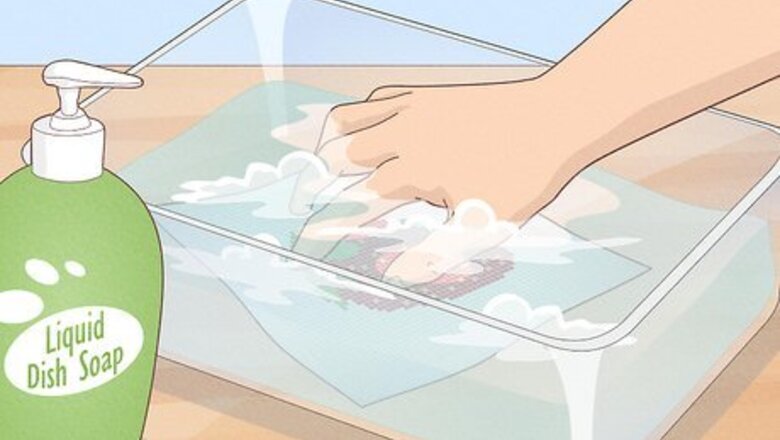
views
- Wash your cross stitch first if it’s creased or stained. Then, iron it so it’s completely flat.
- To do the lacing method, place a piece of cardboard behind your piece, then sew the aida around the cardboard with thread.
- To do the pinning method, place a piece of cardboard behind your piece, then pin it in place with flat-head pins.
- For the sticky board method, cut a piece of sticky board down to size, then trim your cross stitch to match. Stick your piece onto the board before framing it.
Washing and Ironing
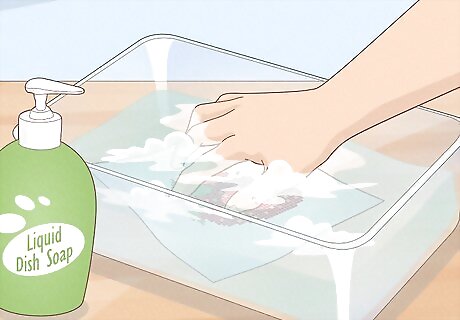
Hand-wash your piece if it’s stained or creased. Washing your finished cross stitch piece isn’t totally necessary, but many people prefer to do it if there’s a stain on the front or if the aida is very creased. If you do want to wash your cross stitch, fill a shallow dish with lukewarm water and 2 drops of mild dish soap. Soak your project in the soapy water for about 5 minutes, then dump out the soapy water and refill the dish with fresh water. Let your piece soak in the fresh water for another 5 minutes. Don’t scrub or rub your project while it’s submerged. Scrubbing or rubbing harshly could damage your stitching, and it may cause your colors to bleed. If you do choose to wash your cross stitch, be sure that you used color-fast floss or thread. Otherwise, your colors may bleed.
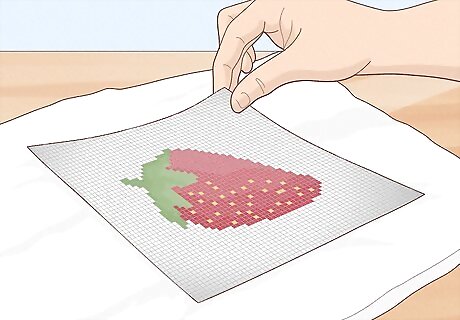
Lay the project flat on a towel to air dry completely. Lay a kitchen towel down on a flat surface, then take your project out of the water and place it on the towel. Be sure to let it dry completely, which could take up to 8 hours depending on the size of the project. If you’d like to, you can gently blot your project with a clean towel once you take it out of the water. However, avoid any harsh scrubbing, or else you could damage your threads.
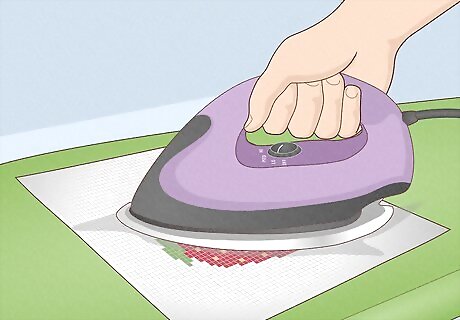
Iron your project on low heat. Ironing is a crucial step before framing: it gets rid of lumps and bumps so your piece sits flat. Spread your cross stitch out on an ironing board, then gently go over the front and back 2 to 3 times until it’s completely smooth. Keep the iron on low heat, and don’t use a steam setting as you iron. If you washed your piece, make sure it’s 100% dry before ironing. Otherwise, you could damage your cross stitch.
Lacing Method
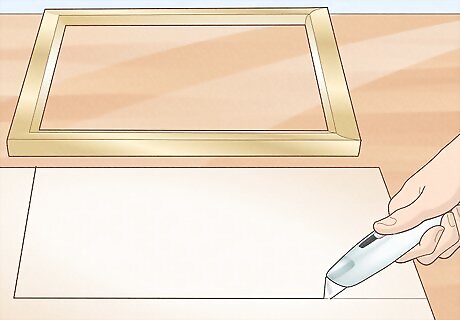
Cut a piece of cardboard down to the size of your frame. Open up your frame and pull out the piece of glass inside of it. Trace around the glass and cut the piece of cardboard down to size. Try to use thin but sturdy cardboard, like that from a cereal box. Thick cardboard may make your project too bulky to frame. Your frame may come with a piece of cardboard inside already. If so, you can just use that.
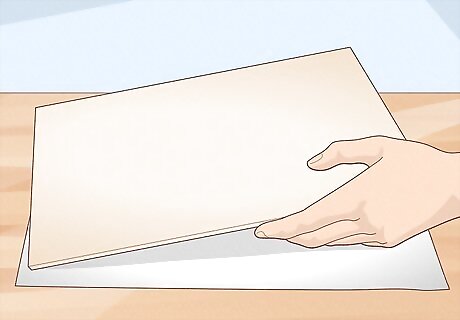
Center the cardboard onto the back of your project. Lay your cross stitch down on a flat surface with the front face-down. Place the piece of cardboard on the back, getting it as close to the center as you can. It’s okay if your cardboard isn’t 100% centered right now, because you’ll be able to make adjustments later on. Just get it as close as you can to make things easier on yourself.
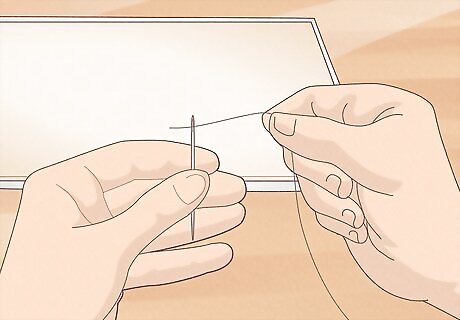
Thread a needle with sewing thread. In the lacing method, you use sewing thread to sew the back of your piece tightly around the cardboard. Pick out a sewing thread (any color will do, since it will be hidden behind your project), and thread it through a sewing needle. Sewing thread is ideal here, because it’s stronger and sturdier than embroidery floss.
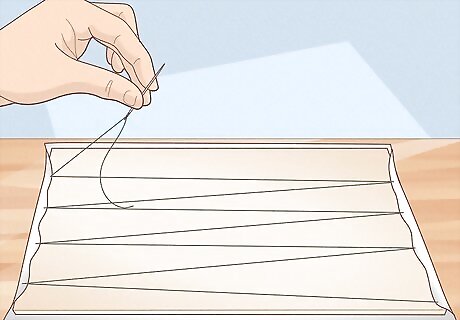
Sew the right and left sides together over the cardboard. Start near the bottom of the cardboard, and insert your needle into the outer edge of your cross stitch piece. Pull the needle through and across the back, then insert it into the left side of the piece. Keep sewing back and forth until you reach the top of the project, then tie your needle off. Space your stitches about 1 cm (0.39 in) together or less. The closer your stitches are together, the more secure your project will be. Take a look at your cross stitch and see if it’s still centered. If not, adjust the piece to center it before moving on.
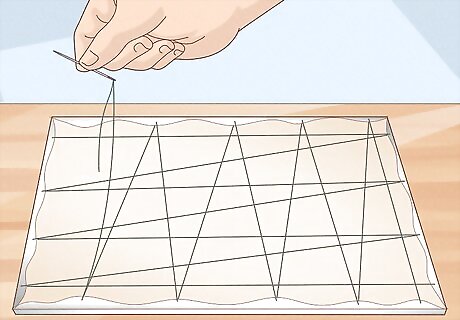
Sew the top and bottom together over the cardboard. Thread your needle again, then insert it into the bottom of your project. Bring your needle up over the back of your piece, then grab the top of the piece and insert your needle through it. Just like you did earlier, keep working back and forth until you’ve sewn the bottom to the top. Once you’re done, cut the thread and tie a knot in it. The back of your piece might look a little messy, but that’s okay! It will be hidden inside of your frame.
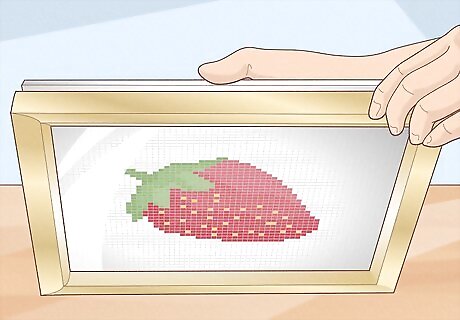
Insert your cross stitch into your frame. Place the glass piece back inside of your frame if you haven’t already. Settle your cross stitch behind the glass, then put the back on your fame. You can now hang up your cross stitch to display it for all your guests to see. If you used a thick piece of cardboard, the back may not fit on your frame, and that’s okay. You can cover the back with a piece of paper using glue, or you can simply leave the back exposed. Since it will be up against the wall, no one will see it.
Pinning Method
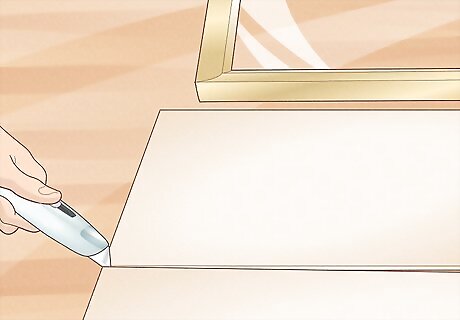
Cut a piece of cardboard the size of your frame. Cardboard will provide support to stretch your piece and keep it in place. Use the glass from the frame as a guide to cut your cardboard down to size. Use a thin piece of cardboard to avoid making your project too bulky. If your frame came with a sturdy piece of cardboard inside, feel free to use that.
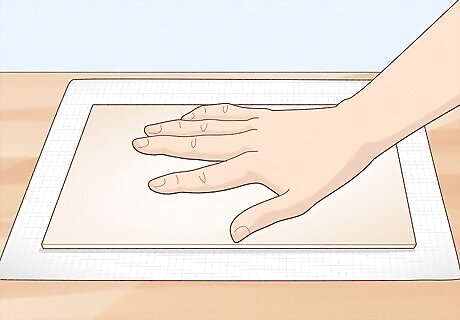
Place the cardboard on the back of your cross stitch. Try to center your piece as much as you can. Lay your cross stitch flat face-down, then put the cardboard on top of it. With the pinning method, it’s a little more important to get the cardboard centered the first time. Use a ruler to measure the sides and make sure they’re all even.
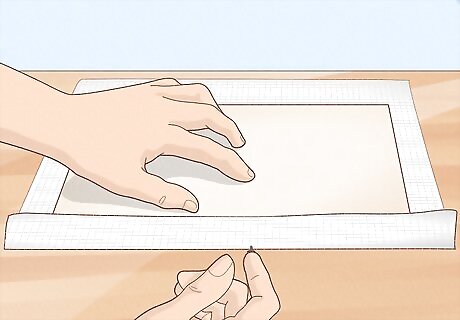
Insert flat-head pins into the top and bottom of the cross stitch. With your cross stitch centered, fold the excess aida over the top of the cardboard. Stick a pin into the edge of the cardboard to hold the aida in place. Then, do the same thing with the bottom of the piece. It’s okay if your cross stitch doesn’t seem secure yet, because you’ll be adding a lot more pins.
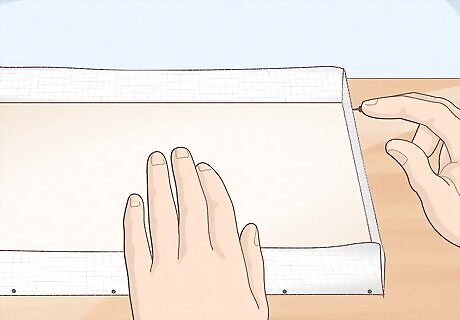
Push pins around the entire edge of the piece. To keep your cross stitch in place, grab pins and push them into the edge of the cardboard about ⁄2 in (1.3 cm) apart. Do this around the top, bottom and both sides of your piece to secure it. When you’re done pinning, you’ll still have some excess fabric on the back to deal with. Don’t worry—you’ll be taking care of that in the next step.
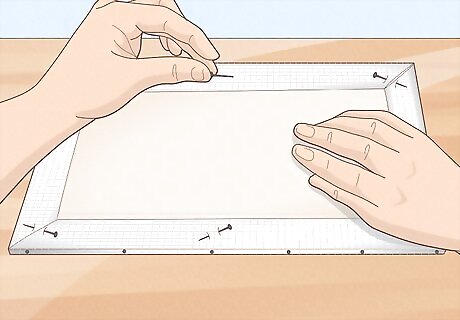
Fold the excess aida over the back and pin it in place. To tuck in the excess fabric, fold it over the cardboard. Use pins to attach the edge of the aida to the back of the cardboard. Fold the corners over themselves and use more pins to keep them in place. It’s okay if the back doesn’t look perfect, since it will be hidden against a wall.
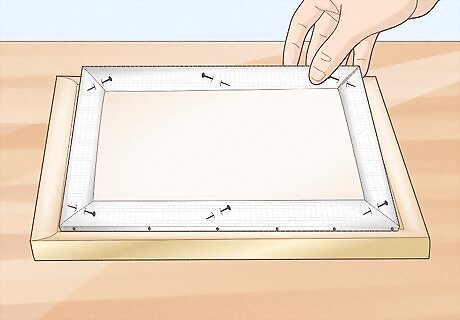
Situate your cross stitch inside your frame. Replace the glass inside your frame if you haven’t already, and put the cross stitch inside the frame. You can replace the back of the frame if it will fit, or you can leave the back of your cross stitch exposed.
Sticky Board Method
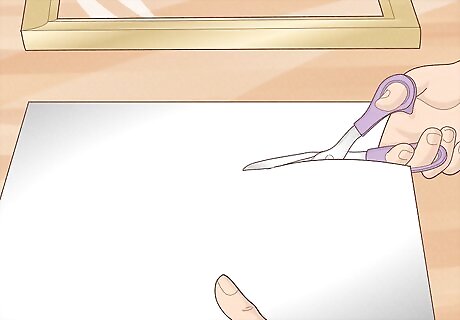
Cut a piece of sticky board to the size of your frame. Sticky board (also called mounting board) is a type of craft board that has 1 sticky side. Use the glass inside your frame to trace the shape onto the sticky board, then use scissors to cut it out.
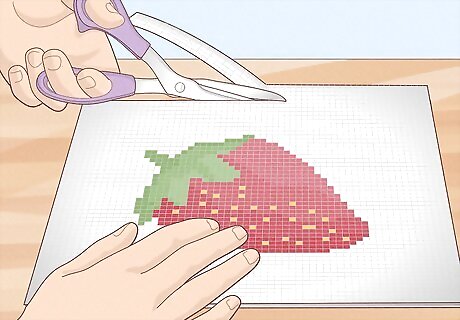
Trim your cross stitch to the size of the sticky board. For the sticky board method, you don’t have to deal with any leftover fabric on the back of your board. Place your cross stitch on the sticky board you cut out, then use scissors to cut it down to size. Make sure your cross stitch is centered on the board before you trim.
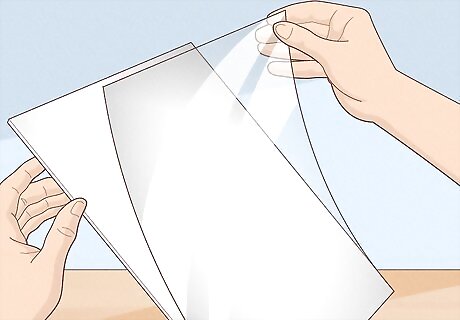
Peel off the sticky backing to expose the sticky side. Flip your sticky board over so that the sticky side faces up. Then, peel off the backing to make the board sticky. Try not to touch the sticky part with your hands, as that can make it less sticky.
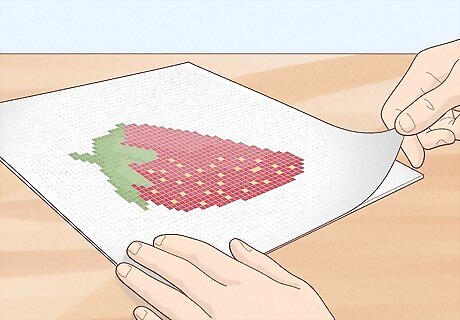
Center your cross stitch and stick it to the board. Grab your cross stitch and hold it over the sticky board, centering it as much as you can. Then, gently press it onto the sticky board, smoothing from the center to the edges to get rid of lumps and bumps. Since you cut your cross stitch down to size, lining it up on the sticky board will be a breeze.
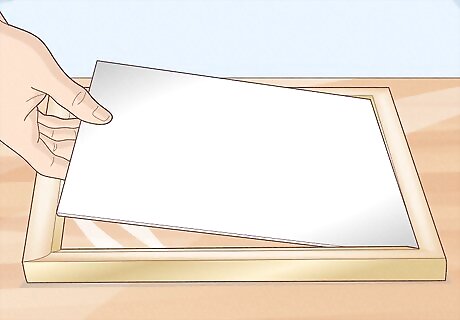
Place your cross stitch inside the frame. Pick up your sticky board and nestle your finished piece inside of the frame. You can place the back onto the frame, or you can leave it exposed against the wall. You can keep the glass inside of the frame, or you can take it out and let the texture of your cross stitch show. It’s up to you!


















Comments
0 comment